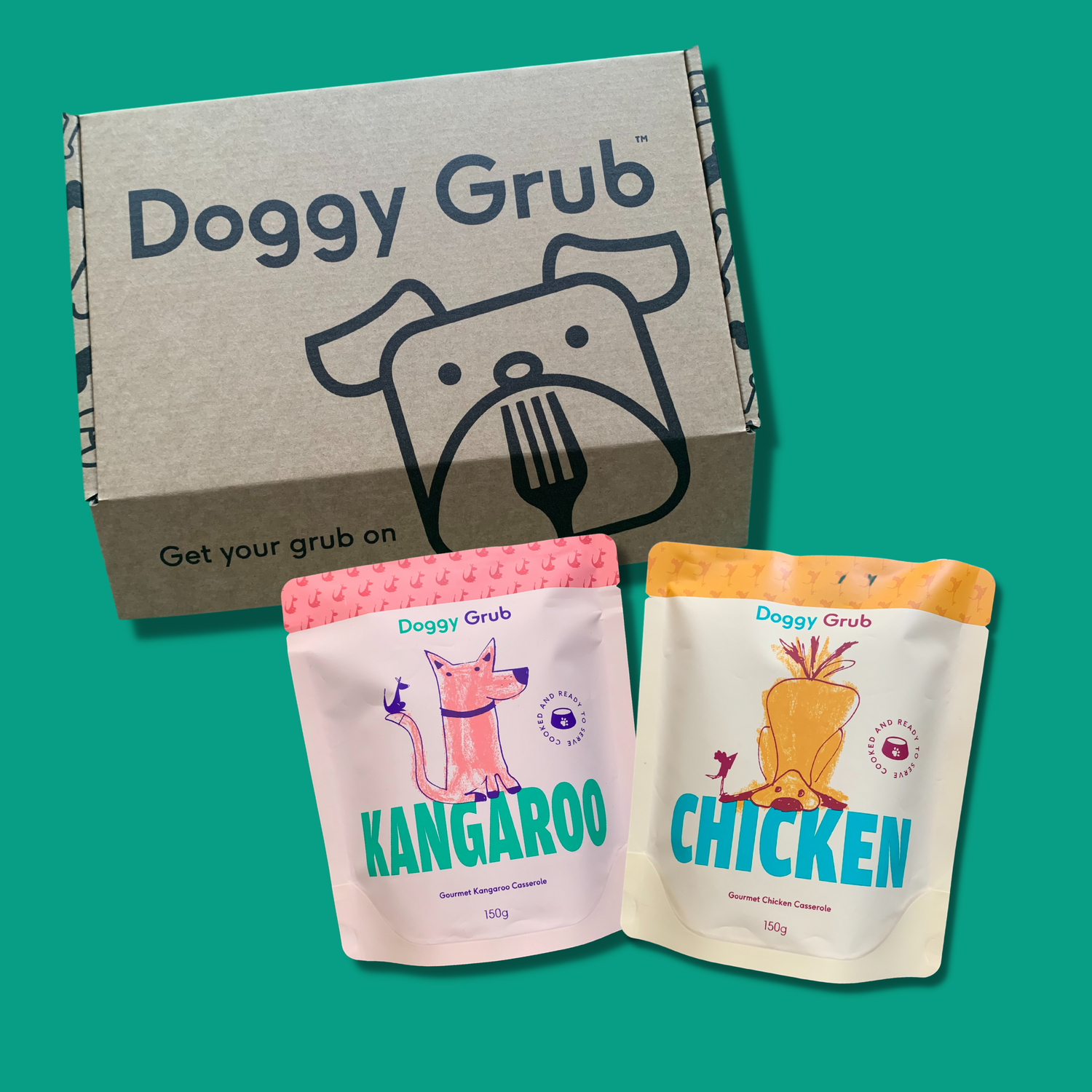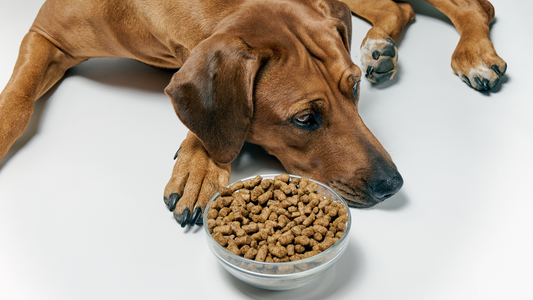We all want the best for our furry pals, and that includes giving them top-notch grub. But have you ever looked at a pack of dog food and felt like those labels are written in another language?
The aisles of pet stores are often lined with an array of dog food options, each boasting their own set of promises and health benefits.
When it comes to ensuring your pup receives the best nutrition, deciphering dog food labels is a crucial skill every pet owner should possess.
How do you navigate through the marketing jargon and truly understand what's in your dog's food?
Ingredients List: The Insider Info
Let's start with the heavyweight champion of dog food labels: the ingredients list. It's like the label's tell-all page.
Ingredients are listed from the most to the least, based on their weight. So, if you spot meat as one of the first ingredients, you're off to a good start. Look for the real stuff: chicken, beef, or fish - not "meal"!
Meat meal is a product of the rendering industry. Meat rendering is a process that turns leftover animal parts not used for human food (like bones, skin, organs, hooves, beaks...) into a dry powder. This powder is then used as an economical ingredient in dog food to provide protein and nutrients.
Since it's made from all these different animal bits, you can't be sure exactly what's in there or if it is as nutritious as the company claims.
It is particularely tricky if you want to feed a single protein diet (for pups with allergies or food intolerance) as you can't tell what meat is used. In fact, meat meal is often a mix of different origins.
Protein Don’t Skimp on It
Picture this: your dog strutting around like a superstar, thanks to a protein-rich diet. Although omnivirous, dogs remain protein enthusiasts.
Protein help with muscle growth, skin health and a strong immune system. It also plays a main role in hormone production. So look for foods with a decent protein content – think 14-20% for adult dogs, and more for puppies.
And as we've seen above, best to go for real protein rather than the meat meal version.
Unraveling the "By-Products" Mystery:
Okay, let's talk about by-products. Sounds mysterious, right? Well, it's not as tricky as it sounds. Some by-products are cool, like liver or heart, which dogs totally dig. But avoid the vague ones, like "meat by-products," because who wants to play detective with their dog's dinner?
Grain-Free: Friend or Foe?
Grain-free diets hit the scene like rockstars, but the hype has calmed down a bit. Remember, not all grains are villains – some dogs can handle them just fine. Oats, millet, quinoa are all grains with tremendous health benefits. In fact, oats are naturally gluten free, which makes it safe for pups with gluten intolerance (a pretty rare allergy for dogs anyway).
But grains should still amount for a small percentage of your dog's diet so look at the ingredient list and see if they're positioned towards the end of the list rather than a first ingredient.
Always make sure the food has balanced nutrition and not just a flashy "grain-free" sticker.
Say No to Fake Stuff: Artificial Additives, You’re Out!
Imagine your dog chowing down on food with artificial colours, flavours, and preservatives. Not a pretty picture, right?
Stick to foods with natural ingredients, or better yet, none of that fake stuff at all.
Your dog doesn't need it! It provides no health benefit whatsoever!
Nutritional Adequacy Statement – The “Gold Seal” or is it?
Ever seen that label claim, "complete and balanced"? It's like the golden ticket for doggy nutrition. It means the food meets all the nutritional needs of your pup according to the AAFCO (Association of American Feed Control Officials). And if it's backed by the AAFCO, you're golden! Right?
While feeding a balanced diet is necessary, you can find perfectly complete & balanced pet foods that are not AAFCO certified.
AAFCO is not a governing agency and does not test or approve pet food. It is a private corporation that only provides guidance, best practices, and sets definitions for pet food ingredients (meat meals, preservatives, fillers etc).
Remember, there are no regulations with pet food (we know, it's crazy!) so don't base yourself solely on that AAFCO approved label.
Guaranteed Analysis: The Math-y Part
Time for a mini math lesson – the guaranteed analysis. It shows the minimum percentages of protein and fat, and the maximum percentages of fiber and moisture. It's like a sneak peek into the nutritional goodies packed into the food.
A chat with your vet or a quick google search can let you know what percentage of protein, fat etc your dog needs and you can then refer back to the guaranteed analysis to make an informed decision.
Use it as a rough guide, not a crystal ball.
Brand Power: Who's Cooking for Your Pooch?
Know your chef – in this case, the manufacturer. Trustworthy brands often do their homework, testing, and quality control to dish out tasty and nutritious food.
But don't just take their word for it; ask fellow fur-parents for recommendations.
Don't hesitate to contact their customer service for additional information. You are the consumer and as such, you have the right to ask questions! If their operations are transparent, they will have no issue in giving you the deets.
If not: that's a red flag!
Beware of Buzzwords: Fancy Labels, No Magic Tricks
"Natural," "holistic," "premium" – sounds impressive, right? But don't be fooled by fancy labels. As you've learn above, the pet food world isn't under strict regulations, so these words might not pack the punch you think.
However, the ingredient list and percentages don't lie!
At Doggy Grub, what you see is what you get- literally, you can see chunks of real meat and veggies in your dog's bowl! We don't hide any ingredients: they're all listed on our pack. And not just that: they're also human grade!
In order to label a food as a “human-grade dog food,” all ingredients must be edible for humans, and the food itself must meet federal manufacturing and packaging regulations.
Tailoring to Your Pup: one size fits all?
Last but not least, remember your dog is as unique as your favorite pair of socks. Their age, breed, size, and activity level all influence their food needs.
However, it doesn't really matter if you buy a food labelled specifically for their breed or season in life. What is important is knowing their nutritional needs so that you can feed more or less of the current food you're using.
So there you have it! From ingredients to protein power and nutritional stamps of approval, you've got the inside scoop on what those labels are really saying. Armed with this newfound knowledge, you're ready to hit the pet store aisle like a pro – making sure your furry buddy gets nothing but the best.
Happy chowing down, and remember, a well-fed pup is a happy pup!
Want to be the first to get your paws onto the hottest topics? Subscribe to our newsletter!
--------------------------------------------------------------------
The Doggy Grub blog is dedicated to helping dogs and their owners achieve happier, healthier lives, changing the way we feed our dogs one bowl at a time! If you would like to know more about our fresh food head to Doggy Grub










